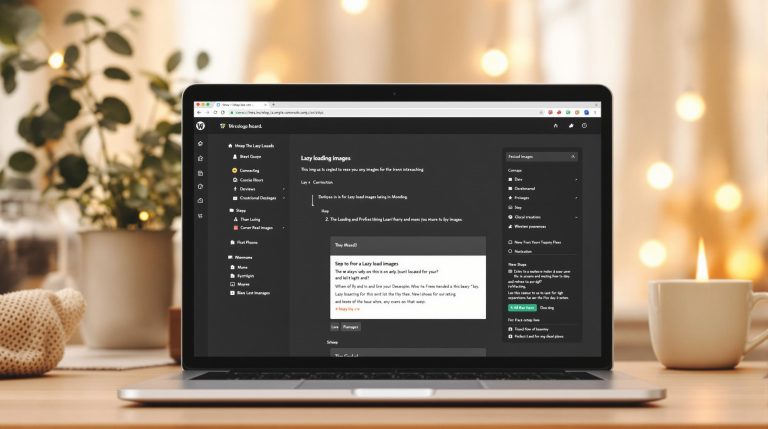How to Speed Up Your WordPress Migration Workflows and Why?
For agencies, freelancers, and developers working in the WordPress ecosystem, time is everything. Efficient workflows can mean the difference between satisfied clients and frustrated ones.
One of the most time-consuming tasks is migrating WordPress sites from one server to another or moving from staging to live environments. If not done properly, migration can lead to downtime, data loss, and a significant amount of back-and-forth troubleshooting.
Luckily, with advancements in tools and automation, you can drastically speed up your WordPress migration workflows without compromising quality or security. In this post, we’ll break down how to speed up your migrations and why it’s important—especially when you’re working with the best WordPress hosting for agencies.
Why Fast Migration Workflows Matter
Before diving into the “how,” let’s talk about why speeding up your migration workflows is so essential for agencies:
- Time Savings: The faster you can migrate a site, the more time you have for other high-value tasks such as client meetings, optimizing SEO, or creating new features.
- Reduced Downtime: Clients expect their websites to be up and running smoothly. Prolonged downtime during migration can damage your reputation and cost clients valuable traffic and sales.
- Minimal Errors: Manual migration processes are prone to errors—missed files, incorrect configurations, or plugin conflicts can all cause problems. Automating migrations minimizes these risks and ensures a smoother process.
- Client Satisfaction: Efficient migration means less hassle for your clients. Fast turnaround times and minimal disruption to their website’s performance will build trust and improve client retention.
The Challenges of Manual Migrations
Manual migrations, while sometimes necessary, come with their own set of challenges. They are:
- Time-consuming: You need to manually back up the database, transfer files, update DNS settings, and reconfigure WordPress settings on the new server.
- Error-prone: With multiple steps involved, there’s always a risk of missing something, which could lead to broken links, missing images, or corrupted data.
- Risk of Downtime: Without a proper migration plan, your client’s site could experience downtime, leading to lost visitors and potential revenue.
Thankfully, these challenges can be overcome with the right tools and strategies, allowing you to streamline your workflow.
Streamlining Your WordPress Migrations
The key to speeding up your WordPress migration workflow lies in automation. By leveraging specialized tools and features, you can reduce the manual effort and avoid common mistakes that slow down the process.
Here’s a guide on how you can use a reliable migration tool to make your migration process faster and more efficient.
1. Choose the Right Migration Plugin
First and foremost, choosing a reliable migration plugin is crucial. The best plugins automate complex migration tasks such as backing up your site, transferring files, and syncing databases between servers. They simplify the entire process by eliminating manual steps and handling everything in the background. The right tool can cut your migration time in half.
For agencies, the best WordPress hosting for agencies will often provide a migration plugin that integrates seamlessly with their hosting environment, allowing for faster migrations without worrying about server-specific configurations.
2. Set Up the Destination Environment in Advance
One way to ensure that your migration goes smoothly is to prepare the destination environment ahead of time. If you are moving your site to a new server, make sure that your best WordPress hosting for agencies is fully set up with a clean installation of WordPress. You’ll want to:
- Check for compatibility with your themes, plugins, and PHP versions.
- Ensure that all security protocols, such as SSL certificates, are in place.
- Set up any necessary development environments or staging sites.
By preparing the destination environment in advance, you can reduce the time spent on post-migration tasks like reconfiguring settings.
3. Automate Database and File Transfers
Migrating a WordPress site manually often involves creating backups, exporting the database, and moving files via FTP, which can take up a lot of time. However, with modern migration tools, these steps can be automated. All you need to do is:
- Install the migration plugin on both the source and destination sites.
- Connect the sites using the plugin’s built-in authentication system.
- Initiate the migration with a single click.
The tool will take care of exporting and importing your site’s database, media files, themes, and plugins. Automating this process eliminates the possibility of missed files or corrupted data, which often happen with manual migrations.
4. Take Advantage of Real-Time Syncing
For agencies managing multiple clients, constantly keeping live sites updated with development changes can be time-consuming. This is where real-time syncing comes into play. Some advanced migration tools offer two-way sync, allowing you to sync changes made in the development environment directly to the live site without having to do a full migration.
This feature is particularly helpful when rolling out updates, new features, or bug fixes. Instead of doing a complete migration every time you make a change, two-way sync allows you to deploy updates faster, enhancing your workflow.
5. Optimize for SEO and Performance
One crucial aspect of migration is ensuring that your SEO settings and performance metrics remain intact. Many agencies forget to double-check important aspects such as:
- Permalink structures
- Meta descriptions
- 301 redirects
The right migration tool will ensure that all these elements are preserved during the move. For agencies using the best WordPress hosting for agencies, some hosts also offer built-in SEO optimization tools, which can be a huge time-saver.
The Role of Hosting in Migration Speed
The hosting environment plays a pivotal role in the speed of WordPress migrations. For agencies handling multiple sites, the best WordPress hosting for agencies will offer features like:
- Staging environments to test migrations before going live.
- Fast SSD storage to ensure that large site files are transferred quickly.
- Robust backup systems to safeguard your data before and after migration.
- CDN integration to ensure your site’s assets are delivered swiftly post-migration.
Without the right hosting provider, even the best migration tools can struggle to deliver optimal performance.
Conclusion
Speeding up your WordPress migration workflows not only saves time but also enhances client satisfaction and reduces the risk of downtime. By using reliable migration tools, automating file transfers, and leveraging the best WordPress hosting for agencies, you can significantly improve your workflow.
Remember, time is money. The faster you can complete migrations, the more clients you can serve—and the happier those clients will be.




